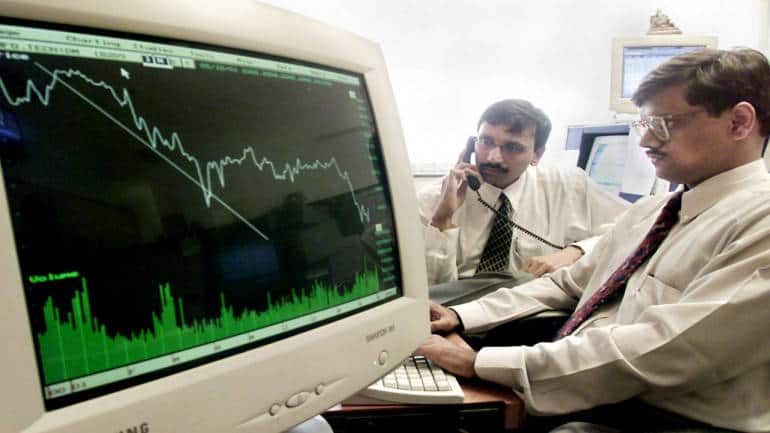Trade results season efficiently by using Options: Shubham Agarwal
With the hep of Options as a trading instrument and as a gauge of current expectations, we can try to avoid any accidents in our trading.
SHUBHAM AGARWAL | 10-Oct-20
Reading Time: 3 minutes

It’s that time of the quarter again when most of the corporates announce their results. One great feature of these few days of the quarter is that the event of results brings in volatility, and where there is volatility there comes an opportunity to trade.
Today we will discuss two aspects of Options while trading during result season. One is tracking and One is Trading. Both of these utilities of Options make trading result season more fun. Most importantly, with the help of Options as a trading instrument and as a gauge of current expectations, we can try to avoid any accidents in our trading.
Let us first start with the Gauge utility of the Options. This will help us to a certain extent in deciphering the expectations getting built out of the upcoming event. We will also look at one more trading specific utility where options are being used to trade through these events.
With options, it becomes rather easy to ball-park the market expectation of the volatility induced by the event. Quite a handy and now almost a rule of thumb is the premium aggregation. So, whichever expiry is expected to cover the event of results, we will track the options of that expiry.
Look at the premiums where both Call and Put of the strike closest to the current market price are trading at currently. Add both the premiums and Add and Subtract the addition of premiums to and from the current market price. This will give us a ballpark range within which the market is expecting the result led movement is expected.
One more element of Options, Implied Volatility a.k.a. IV gets impacted because of results. This element is the volatility input implied by the option premium (as we all know what market rate of the option is). The higher the option premium higher would be the implied volatility.
IV does tend to rise disproportionately to the rest of the market for a stock when it is expected to come up with a result. The sheer anxiety of the unknown which is going to unfold in the results creates this rise in premium gauged by us via rise in IV.
This IV has a tendency of falling flat on the day of results. Since the unknown becomes known on the day of results the anxiety does down and the IV reduces. In other words, the premiums reduce across the board due to this reduction in IV.
Let us now see how we can use these two gauges in our trading using options.
Firstly, the range that we could define with the help of premiums can give us an expectation of volatility. With the help of Options, we can actually devise a strategy of going long or short volatility if our expectation varies from market expectation.
In case, we feel that the stock may go up or down more than what is priced, simply Buy both Call and Put and create a Buy Volatility strategy. If it is another way around, one may actually Sell both Call and Put and sell volatility.
Now, since it is an event and Selling Options have unlimited risk profile, it is highly recommended that these Sell Volatility trades can be balanced with Buy position in a Higher strike Call and a Lower Strike Put. This can bring an unlimited risk profile into a limited risk profile at the cost of some premium.
Secondly, the IV gauge is very useful to trading as well. Now, if we gather past 3-4 results data and see the change in IV on the day of result (magnitude of fall), we can ballpark the reduction in IV.
Here the utility is very simple. While our day to day course of trading is going as usual, we can just accommodate this fall in IV in our trade, if the trade is going to go thru the result led volatility in IV. The accommodation is very simple.
Options are anyways very handy instruments for events. We know the limited premium paid is the only loss. With upcoming volatility, one would anyways Buy an Option instead of a future to trade direction. Here, if we are going to go through the result with the trade being active, it makes sense to convert the Buy Option trade into a spread by Selling a higher Call against Buy Call and Selling a Lower Put against Buy Put.
What this does is, the impact of fall in premium led by fall in IV gets to a certain extent neutralized when the result is out.
Across the globe, Options are used as the primary instrument to trade events. Result being a repetitive event, aforementioned gauges and tactics can come in handy to trade efficiently during result season.
(The author is CEO & Head of Research at Quantsapp)
Disclaimer: The views and investment tips expressed by investment experts on Moneycontrol.com are their own and not that of the website or its management. Moneycontrol.com advises users to check with certified experts before taking any investment decisions.
Learn and read more about volatility skew from Quantsapp classroom which has been curated for understanding of Nifty index from scratch, to enable option traders grasp the concepts practically and apply them in a data-driven trading approach.
Recent Articles

Knowing when not to adjust trades: Shubham Agarwal
27-Dec-25

How to make profit when markets go sideways: Shubham Agarwal
20-Dec-25

Beyond Panic: Take control when your derivatives trade turns red, says Shubham Agarwal!
13-Dec-25

Evolve Your Trade: The missing step in most trading systems: Shubham Agarwal
06-Dec-25

Best trending option trading strategies: Shubham Agarwal
29-Nov-25

3 best ways to hedge using Options: Shubham Agarwal!
22-Nov-25

When in doubt to write, do Iron Fly: Shubham Agarwal!
15-Nov-25

Identify potential turning points with advance-decline: Shubham Agarwal
08-Nov-25

SHUBHAM AGARWAL is a CEO & Head of Research at Quantsapp Pvt. Ltd. He has been into many major kinds of market research and has been a programmer himself in Tens of programming languages. Earlier to the current position, Shubham has served for Motilal Oswal as Head of Quantitative, Technical & Derivatives Research and as a Technical Analyst at JM Financial.
Recent Articles

Knowing when not to adjust trades: Shubham Agarwal
27-Dec-25 10:58:00

How to make profit when markets go sideways: Shubham Agarwal
20-Dec-25 12:14:00

Beyond Panic: Take control when your derivatives trade turns red, says Shubham Agarwal!
13-Dec-25 09:12:00

Evolve Your Trade: The missing step in most trading systems: Shubham Agarwal
06-Dec-25 20:43:00

Best trending option trading strategies: Shubham Agarwal
29-Nov-25 09:32:00

3 best ways to hedge using Options: Shubham Agarwal!
22-Nov-25 09:11:00

When in doubt to write, do Iron Fly: Shubham Agarwal!
15-Nov-25 10:48:00











